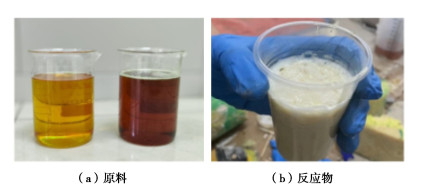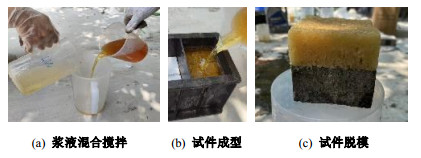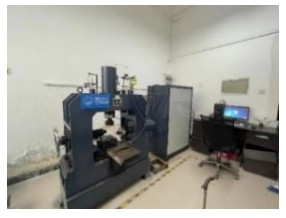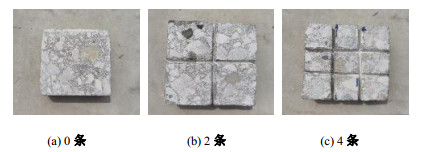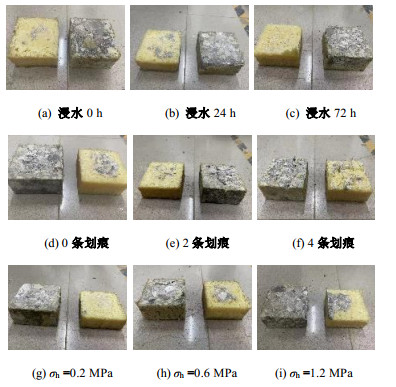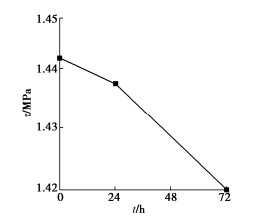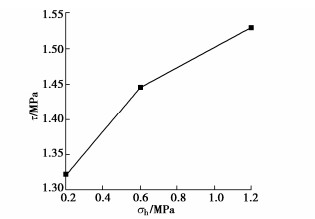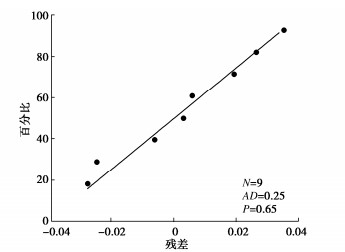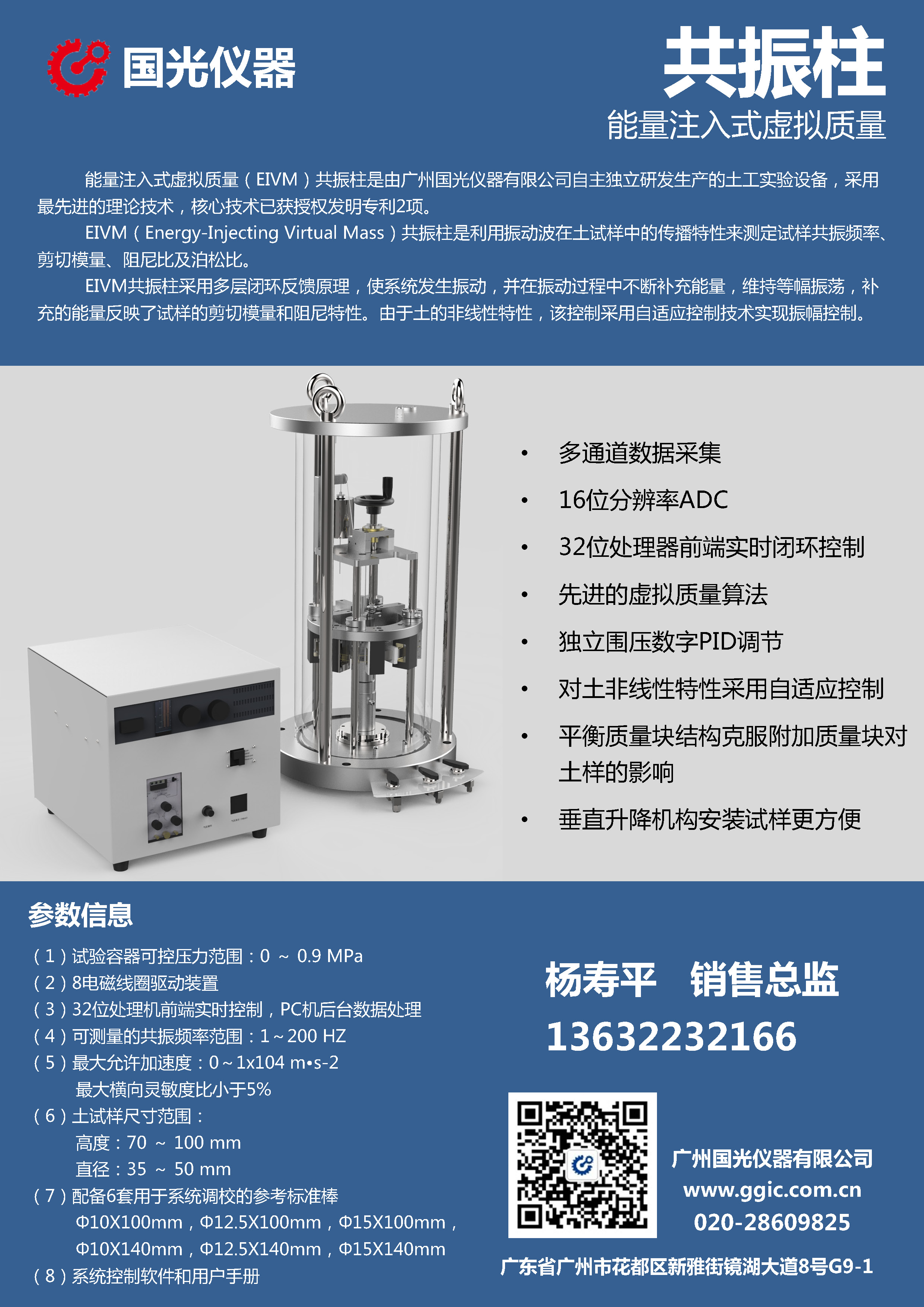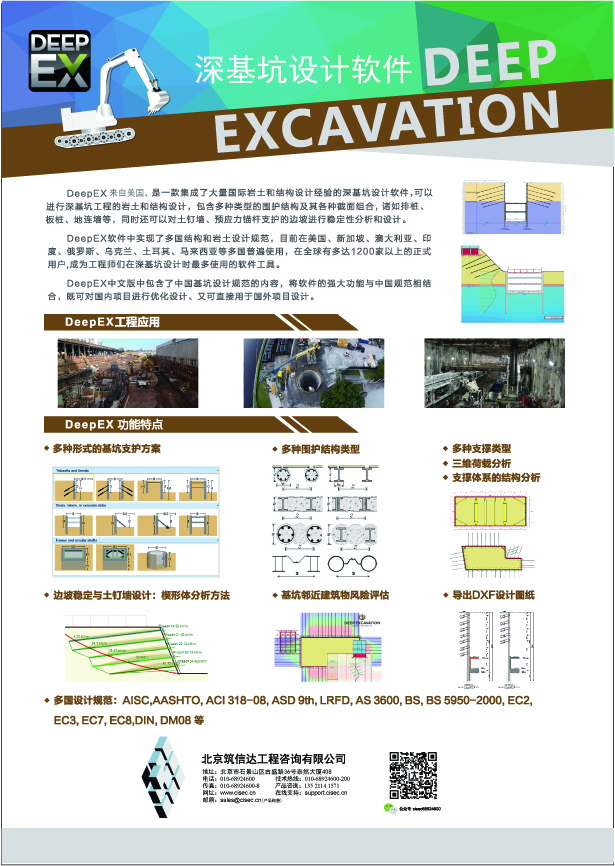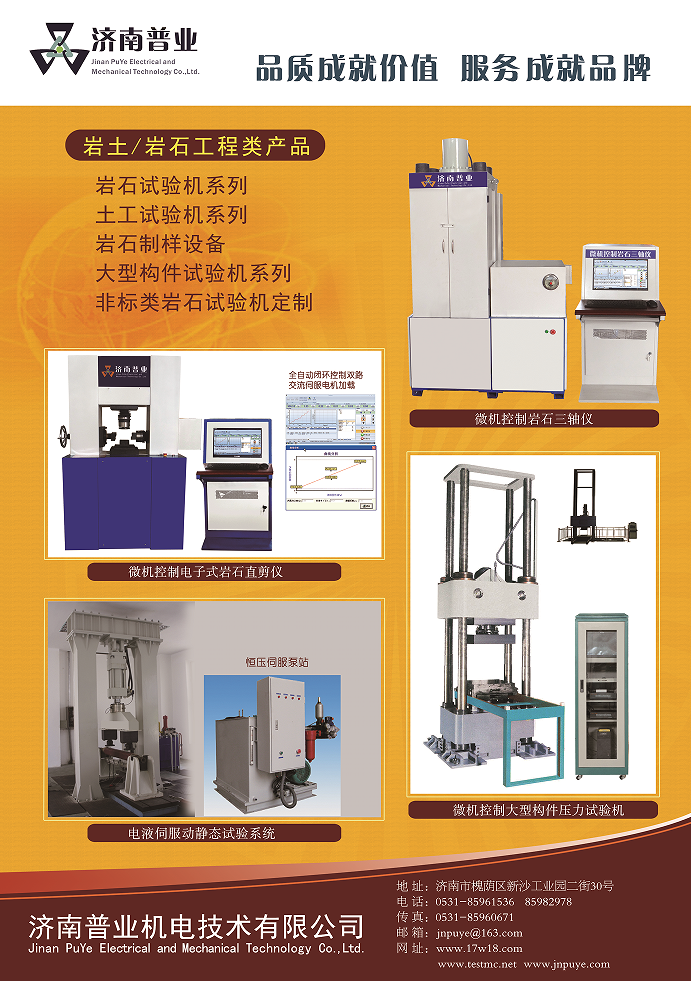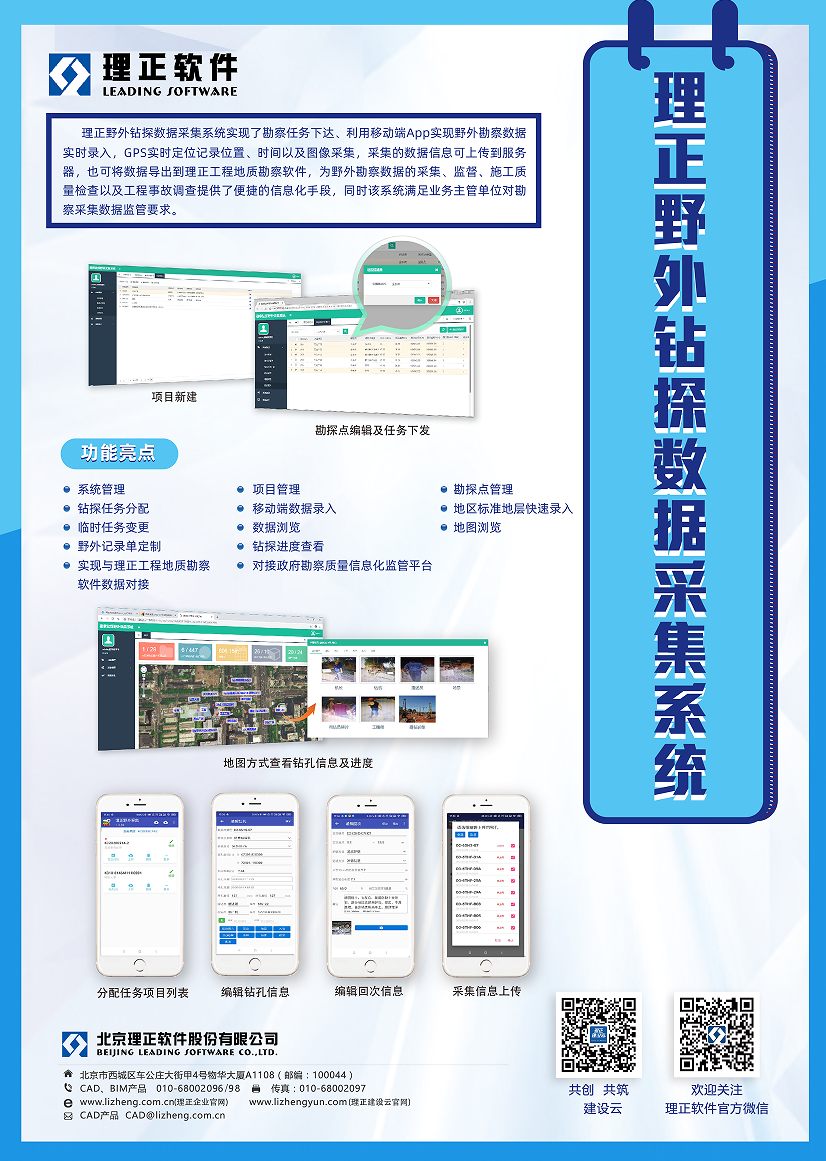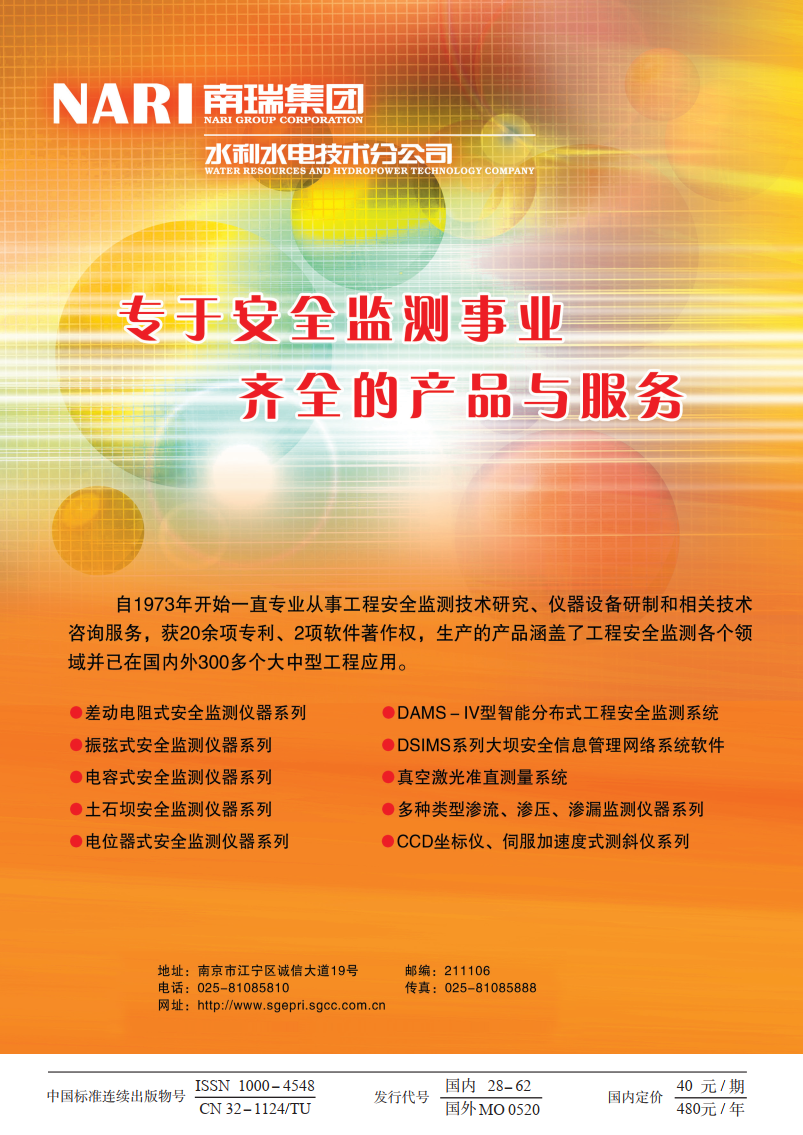Interfacial behavior of permeable polymer and concrete at joints of cross-river shield tunnels
-
摘要: 接缝渗漏是运营期过江盾构隧道的主要病害之一,盾构隧道工程常用注浆材料在隧道渗漏处治中与接缝混凝土黏结性能较差,造成渗漏处治效果不理想。在现有注浆材料的基础上研发了新型渗透型高聚物,为进一步研究新型渗透型高聚物用于隧道接缝渗漏处治的适用性,考虑了界面潮湿度、法向荷载、界面粗糙度等因素,设计了渗透型高聚物–混凝土界面直剪试验,研究了界面潮湿度、法向荷载、界面粗糙度等因素对渗透型高聚物–混凝土界面黏结性能的影响,建立并验证了渗透型高聚物–混凝土界面抗剪强度理论模型。结果表明:渗透型高聚物–混凝土界面抗剪强度与法向应力、界面粗糙度呈正比,与隧道潮湿程度呈反比。各因素对渗透型高聚物–混凝土界面抗剪强度的影响从大到小的排序为法向应力>粗糙度>潮湿度。渗透型高聚物–混凝土界面抗剪强度线性回归理论模型服从残差正态分布,能够直观预测抗剪强度与各因素间的定量关系。渗透型高聚物–混凝土界面抗剪强度最高可达1.5 MPa,符合过江盾构隧道渗漏处治需求。Abstract: Joint leakage is one of the main diseases of shield tunnels crossing rivers during operation. The bonding performance with joint concrete and commonly used grouting materials in shield tunnel engineering is poor. The effects of common materials used for leakage treatment are limited. The authors has developed a new type of permeable polymer based on the existing grouting materials. A series of tests are carried out to investigate the applicability of the new permeable polymer for joint leakage treatment of tunnels. A theoretical model for the interface between the permeable polymer and the concrete is established and validated. The main conclusions are as follows: the interfacial shear strength between the permeable polymer and the concrete segments is directly proportional to the interfacial roughness and normal stress, and inversely proportional to the degree of humid condition of tunnels. The degree of influences of various factors on the interfacial strength is normal pressure > interfacial roughness > interfacial humidity. The residual error of linear regression theoretical model for the shear strength of interface between the polymer and the segment concrete obeys the normal distribution. The shear strength of the interface between the permeable polymer and the concrete can reach up to 1.5 MPa. The permeable polymer meets the needs of leakage treatment in cross-river shield tunnels.
-
0. 引言
伴随中国南海岛礁的建设和“一带一路”战略规划的实施,珊瑚礁砂的液化特性及地基处理方法成为工程界的热点问题之一[1-4]。碎石桩作为工程常用的一种地基抗液化处理方法,利用改善地基排水条件和振密桩周土体,使地基抗液化强度提高。然而,多次强震荷载下碎石桩长期服役的抗液化性能及淤堵性缺乏研究;同时,珊瑚礁砂地基碎石桩的抗液化有效性也尚待深入探究。
目前,国内外诸多学者利用单元试验(共振柱、动三轴等)、振动台和数值分析等手段,对珊瑚礁砂液化特性及地基处理方法开展了大量研究。如:Chen等[2]采用不排水循环三轴探讨了珊瑚礁砂的模量阻尼比特性及抗液化强度。Xiao等[3]通过动三轴试验论证了MICP法处理降低珊瑚砂液化风险的有效性。秦志光[4]基于原位勘察测试方法,分析了强夯、振冲等方法对珊瑚礁砂地基抵抗液化的加固效果;刘凯[5]联合多种研究手段,研究倾斜场地碎石桩处理地基地震液化变形规律。总之,珊瑚礁砂场地抗液化强度及处理方法有效性,尚有待深入研究,辟如:刘凯[5]分析动力离心试验碎石桩长期服役性能时,指出碎石桩渗入细粒而发生淤堵,但多次强震下超静孔压消散速率并未明显改变,二者相悖。
本文以东帝汶Tibar港口码头工程为背景,开展珊瑚礁砂碎石桩动力离心模型试验,施加序列强震荷载,利用碎石桩剖面图像观测、试验前后级配测试、超静孔压比消散速率变化等分析,探讨多次强震下碎石桩淤堵性及排水性能变化,为评判碎石桩长期服役的有效性和工程建设提供参考。
1. 动力离心试验设备与模型设计
1.1 试验设备
本次试验在中国地震局工程力学研究所振动负载1500 kg动力离心机上开展,其主机及振动台如图 1所示。该试验设备的主要技术指标:有效负载300 g·t,离心加速度100g,最大半径5.5 m,振动加速度30g,振动速度1 m/s,振动位移10 mm,振动频宽10~300 Hz,振动台台面有效尺寸为1.6 m×0.8 m,配置160 ch动态数据采集系统。试验选取柔性剪切模型箱,内尺寸1.2 m×0.5 m×0.65 m。
1.2 试验模型材料
本次试验采用Tibar港口工程原位珊瑚礁砂,原始土样颗粒级配宽,属于粗粒土,如图 2所示。动力离心试验作为一种缩尺物理试验,考虑《土工离心模型试验技术规程》(DL∕T 5102—2013)[6]的规定:“对于粗粒土,允许最大粒径应不超过1/20~1/10模型宽度,其平均粒径不超过1/250~1/60模型宽度”,借鉴以往学者们对珊瑚礁砂试验剔除2 mm以上颗粒来避免粒径效应[7],本文试验保留了2~5 mm颗粒,仅剔除 > 5 mm颗粒,既能满足《规范》的粒径效应要求,又有助于反映真实的工程土体力学行为,剔除后的试验珊瑚礁砂级配如图 2所示。
碎石桩的面积置换率、桩型等设计参数与工程原型保持一致,确定碎石桩置换率14.5%,按正三角形布设,为悬浮桩。并为避免尺寸效应影响,确定碎石桩直径为80 mm,由置换率确定桩间距为200 mm,碎石桩级配考虑其主要依赖快速排水能力实现地基发生液化风险和程度的降低,按工程原型碎石桩与场地土体渗透系数比值800作为主要控制参数进行设计,同时考虑粒径效应与碎石桩直径、原型碎石级配相似等因素,设计的碎石桩级配如图 2所示。试验模型地基和碎石桩材料的基本物理力学参数,见表 1。
表 1 试验材料基本物理力学参数Table 1. Physical properties of test materials试验材料 Gs ρmax/ (g·cm-3) ρmin/ (g·cm-3) emin emax k/ (cm·s-1) 珊瑚礁砂 2.785 1.826 1.386 0.525 1.009 5.1×10-3 碎石桩 2.370 1.754 1.446 0.248 0.580 4.443 1.3 模型设计与试验方案
试验模型设计与量测方案如图 3所示,地基土为400 mm厚珊瑚礁砂,相对密实度50%,采用砂雨法+分层压实法制备。碎石桩桩长300 mm,相对密实度70%,采用分层夯实法制备。试验模型地基内布设了一列加速度和孔压传感器,还在碎石桩表面和桩周地表布设了位移计,以监测模型沉降变化。试验所用加速度计为美国PCB传感器,孔压计为中国地震局工程力学研究所自主研制分体式DSP-Ⅱ传感器。
试验离心加速度为50g,选取LEAP波、安评地震波为输入荷载,台面实测荷载时程如图 4所示。安评地震波输入峰值分别为0.05g,0.1g,0.2g,0.3g,0.4g,0.53g等工况,LEAP输入峰值分别为0.05g,0.1g,0.2g,0.3g等工况,两种荷载交替输入。
2. 碎石桩淤堵性分析
2.1 强震荷载下地基液化分析
试验模型在7条峰值≥0.2g强震荷载下,埋深1.25 m处土体均发生了液化,即超静孔压达到了有效应力,而埋深7.5 m处超静孔压随着地震动强度增大而增大,但一直未达到该位置有效应力,未发生液化,如图 5所示。
2.2 试验后模型开挖及碎石桩剖面
试验完成后沿模型中心剖面进行了开挖,获得了5根碎石桩剖面如图 6所示。仔细观察和对比可发现,碎石桩在试验过程中保持了良好形态,桩周未包裹珊瑚礁砂细粒,仍具备良好的渗透能力。图 6给出了5根开挖后的代表性碎石桩剖面照片,可以直观看出碎石桩内颗粒分布均匀、色泽与桩周土体区分明显,由粗颗粒组成,均未出现明显细颗粒淤堵现象。
2.3 试验前后碎石桩颗粒级配对比
以试验前后碎石桩粒组变化差异,判断是否产生了淤堵,试验前后分别作了碎石桩材料筛分试验,结果如图 7所示,可以发现试验后碎石桩级配与试验前相比基本一致,表明细粒未渗入到碎石桩中,与前面碎石桩剖面观察结果一致。
2.4 超静孔压比消散速率分析
选取图 5中第1次0.2g和第6次0.53g安评地震波下埋深1.25 m和7.5 m处超静孔压比记录(如图 8所示),计算分析多次强震作用下碎石桩排水性能的变化,以超静孔压比消散速率为表征参数,其公式如下:
v=ΔruΔt。 (1) 式中:Δru为超静孔压比自峰值消散至0.1的变化量;Δt为与超静孔压比消散对应的时间变化量。
通过式(1)计算,获得0.2g和0.53g安评波下,埋深1.25 m处超静孔压比的消散速率分别为0.027 s-1,0.029 s-1;7.5 m处超静孔压比消散速率分别为0.021 s-1,0.020 s-1,可得知6次强震荷载下土层超静孔压比消散速率未发生变化,再一次证明了经历多次强震作用后,碎石桩仍能保持良好排水性能;同时,也证明了碎石桩长期服役下的良好抗液化能力。
3. 结论
(1)珊瑚礁砂碎石桩复合地基在7次≥0.2g强震荷载作用下均发生了液化,埋深1.25 m处超静孔压比均达到了1.0;7.5 m处未发生液化,但超静孔压比随着地震动强度的增大而增大。
(2)试验后开挖5根碎石桩剖面,直观观察可发现,碎石桩经历多次强震作用下仍能保持良好形态,且未明显发现细粒渗入碎石桩现象,试验前后获得碎石桩颗粒级配曲线基本一致,无明显变化。
(3)提出以超静孔压比消散速率表征地基排水能力,第1次和第6次安评波荷载下,埋深1.25 m处超静孔压比消散速率分别为0.027 s-1,0.029 s-1,埋深7.5 m处分别为0.021 s-1,0.020 s-1,表明碎石桩经历多次强震作用下仍具备良好的渗透能力,未出现淤堵现象。
-
表 1 C60混凝土参数
Table 1 Parameters of C60 concrete
混凝土
类型E/GPa G/GPa μ 抗渗
等级C60 36 14.4 0.167 P10 表 2 正交试验因素水平
Table 2 Levels of orthogonal experimental factors
因子 界面浸水时长t/h 界面划痕数n/条 法向应力σ/MPa 水平1 0 0 0.2 水平2 24 4 0.6 水平3 72 9 1.2 表 3 PP-C界面直剪试验结果
Table 3 Results of direct shear tests on PP-C interface
试验编号 浸水时长t/h 划痕n/条 法向应力σh/MPa 抗剪强度τ/MPa 1 0 0 0.2 1.2820 2 0 2 0.6 1.4561 3 0 4 1.2 1.587 4 24 2 1.2 1.5109 5 24 4 0.2 1.3862 6 24 0 0.6 1.4152 7 72 4 0.6 1.4683 8 72 0 1.2 1.4920 9 72 2 0.2 1.2983 表 4 PP-C界面抗剪强度极差分析表
Table 4 Analysis of poor shear strength of PP-C interface
指标 浸水时长t/h 划痕数n/条 法向应力σh/MPa K1 1.441700000 1.396400000 1.322166667 K2 1.437433333 1.421766667 1.446533333 K3 1.419533333 1.480500000 1.529966667 R 0.022166667 0.084100000 0.207800000 表 5 多元回归系数
Table 5 Multiple regression coefficients
回归系数 a b1 b2 b3 数值 1.2661 -0.000317 0.02102 0.2024 表 6 界面抗剪强度方差分析
Table 6 Analysis of variance of shear strength of interface
来源 自由度 SS MS F P 回归 3 0.073672 0.024557 25.44 0.002 误差 5 0.004826 0.000965 合计 8 0.078497 注:S = 0.145897,R-Sq= 94.77%,R-Sq(调整)= 89.55%。 -
[1] YOO C. Effect of water leakage in tunnel lining on structural performance of lining in subsea tunnels[J]. Marine Georesources & Geotechnology, 2017, 35(3): 305-317.
[2] 葛双双, 高玮, 汪义伟, 等. 我国交通盾构隧道病害、评价及治理研究综述[J]. 土木工程学报, 2023, 56(1): 119-128. https://www.cnki.com.cn/Article/CJFDTOTAL-TMGC202301011.htm GE Shuangshuang, GAO Wei, WANG Yiwei, et al. Review on evaluation and treatment of traffic shield tunnel defects in China[J]. China Civil Engineering Journal, 2023, 56(1): 119-128. (in Chinese) https://www.cnki.com.cn/Article/CJFDTOTAL-TMGC202301011.htm
[3] 龚琛杰, 丁文其, 雷明锋, 等. 营运越江盾构隧道渗漏水病害特征及整治研究[J]. 现代隧道技术, 2020, 57(S1): 247-254. https://www.cnki.com.cn/Article/CJFDTOTAL-XDSD2020S1031.htm GONG Chenjie, DING Wenqi, LEI Mingfeng, et al. Case study on water leakage features and repair works of operational river-passing shield tunnel[J]. Modern Tunnelling Technology, 2020, 57(S1): 247-254. (in Chinese) https://www.cnki.com.cn/Article/CJFDTOTAL-XDSD2020S1031.htm
[4] ZHENG K L, YANG X H, CHEN R, et al. Application of a capillary crystalline material to enhance cement grout for sealing tunnel leakage[J]. Construction and Building Materials, 2019, 214: 497-505. doi: 10.1016/j.conbuildmat.2019.04.095
[5] 龚晓南, 郭盼盼. 隧道及地下工程渗漏水诱发原因与防治对策[J]. 中国公路学报, 2021, 34(7): 1-30. doi: 10.3969/j.issn.1001-7372.2021.07.002 GONG Xiaonan, GUO Panpan. Prevention and mitigation methods for water leakage in tunnels and underground structures[J]. China Journal of Highway and Transport, 2021, 34(7): 1-30. (in Chinese) doi: 10.3969/j.issn.1001-7372.2021.07.002
[6] 李东彪, 姜育科. 运营期水下盾构隧道渗漏成因及治理技术研究[J]. 中国建筑防水, 2020(10): 14-17. https://www.cnki.com.cn/Article/CJFDTOTAL-ZGJF202010005.htm LI Dongbiao, JIANG Yuke. Study on the leakage cause and treatment technology of underwater shield tunnel during operation period[J]. China Building Waterproofing, 2020(10): 14-17. (in Chinese) https://www.cnki.com.cn/Article/CJFDTOTAL-ZGJF202010005.htm
[7] 夏国燕, 柴晓波, 屠甄, 等. 隧道及地下工程渗漏水诱发原因与防治[J]. 工业建筑, 2021, 51(12): 180. https://www.cnki.com.cn/Article/CJFDTOTAL-ZGGL202107002.htm XIA Guoyan, CHAI Xiaobo, TU Zhen, et al. Causes and prevention of water leakage in tunnels and underground engineering[J]. Industry Building, 2021, 51(12): 180. (in Chinese) https://www.cnki.com.cn/Article/CJFDTOTAL-ZGGL202107002.htm
[8] LI Z Q, WANG M N, YU L, et al. Study of the basement structure load under the dynamic loading of heavy-haul railway tunnel[J]. International Journal of Pavement Engineering, 2020, 21(11): 1362-1373. doi: 10.1080/10298436.2018.1546006
[9] 王雅建. 盾构衬砌接缝密封性能衰退演变机理多尺度研究[D]. 北京: 中国地质大学(北京), 2020. WANG Yajian. Sealing Performance Degradation and Evolution of Shield Lining Joints-Multiple Scale Research[D]. Beijing: China University of Geosciences, 2020. (in Chinese)
[10] 谭文怡. 盾构隧道管片接头密封垫的高温后性能研究[D]. 广州: 华南理工大学, 2015. TAN Wenyi. Research on the Property of Rubber Gaskets in Shield Tunnel Lining Joints after High Temperature[D]. Guangzhou: South China University of Technology, 2015. (in Chinese)
[11] 臧建波. 盾构隧道管片纵缝接头的加固试验与分析[D]. 广州: 华南理工大学, 2016. ZANG Jianbo. Experiments and Analyses of Strengthened Longitudinal Joints of Shield Tunnel Lining[D]. Guangzhou: South China University of Technology, 2016. (in Chinese)
[12] ZHANG Z G, MAO M D, PAN Y T, et al. Experimental study for joint leakage process of tunnel lining and particle flow numerical simulation[J]. Engineering Failure Analysis, 2022, 138: 106348. doi: 10.1016/j.engfailanal.2022.106348
[13] 刘印, 张冬梅, 黄宏伟. 基于纵向不均匀沉降的盾构隧道渗漏水机理分析[J]. 铁道工程学报, 2011, 28(5): 66-70. https://www.cnki.com.cn/Article/CJFDTOTAL-TDGC201105014.htm LIU Yin, ZHANG Dongmei, HUANG Hongwei. Analysis of mechanism of water leakage induced by longitudinal uneven settlement of shield tunnel[J]. Journal of Railway Engineering Society, 2011, 28(5): 66-70. (in Chinese) https://www.cnki.com.cn/Article/CJFDTOTAL-TDGC201105014.htm
[14] 张冬梅, 樊振宇, 黄宏伟. 考虑接头力学特性的盾构隧道衬砌结构计算方法研究[J]. 岩土力学, 2010, 31(8): 2546-2552. https://www.cnki.com.cn/Article/CJFDTOTAL-YTLX201008033.htm ZHANG Dongmei, FAN Zhenyu, HUANG Hongwei. Mechanical characteristics of joints Calculation method of shield tunnel lining considering[J]. Rock and Soil Mechanics, 2010, 31(8): 2546-2552. (in Chinese) https://www.cnki.com.cn/Article/CJFDTOTAL-YTLX201008033.htm
[15] 石明生. 高聚物注桨材料特性与堤坝定向劈裂注桨机理研究[D]. 大连: 大连理工大学, 2011. SHI Mingsheng. Research on Polymer Grouting Materrial Properties and Directional Fracturing Grouting Mechanism for Dykes and Dams[D]. Dalian: Dalian University of Technology, 2011. (in Chinese)
[16] 王复明, 李嘉, 石明生, 等. 堤坝防渗加固新技术研究与应用[J]. 水力发电学报, 2016, 35(12): 1-11. https://www.cnki.com.cn/Article/CJFDTOTAL-SFXB201612001.htm WANG Fuming, LI Jia, SHI Mingsheng, et al. New seepage-proof and reinforcing technologies for dikes and dams and their applications[J]. Journal of Hydroelectric Engineering, 2016, 35(12): 1-11. (in Chinese) https://www.cnki.com.cn/Article/CJFDTOTAL-SFXB201612001.htm
[17] GUO C C, CHU X X, WANG F M. The feasibility of non-water reaction polymer grouting technology application in seepage prevention for tailings reservoirs[J]. Water Science & Technology: Water Supply, 2018, 18(1): 203-213.
[18] 李嘉. 高聚物防渗墙土质堤坝抗震性能研究[D]. 郑州: 郑州大学, 2016. LI Jia. Research on Anti-Seismic Property for the Earth Dikes and Dams with Polymer Anti-Seepage Wall[D]. Zhengzhou: Zhengzhou University, 2016. (in Chinese)
[19] WANG Y K, WAN Y S, GUO C C, et al. Experimental investigation on the monotonic, cyclic and post cyclic interfacial behavior of non-water reacted polymer and concrete[J]. Construction and Building Materials, 2021, 292: 123323.
[20] 王钰轲, 万永帅, 刘琪, 等. 非水反应高聚物与土工材料的界面剪切特性[J]. 建筑材料学报, 2021, 24(1): 115-120. https://www.cnki.com.cn/Article/CJFDTOTAL-JZCX202101017.htm WANG Yuke, WAN Yongshuai, LIU Qi, et al. Interfacial shear properties of non-water reacted polymer and geomaterials[J]. Journal of Building Materials, 2021, 24(1): 115-120. (in Chinese) https://www.cnki.com.cn/Article/CJFDTOTAL-JZCX202101017.htm
[21] 王钰轲, 于博文, 曹天才, 等. 非水反应高聚物–混凝土界面单调剪切特性及本构模拟[J]. 工程科学与技术, 2021, 53(6): 122-131. https://www.cnki.com.cn/Article/CJFDTOTAL-SCLH202106012.htm WANG Yuke, YU Bowen, CAO Tiancai, et al. Constitutive simulation and interfacial shear characteristics of non-water reaction polymer and concrete[J]. Advanced Engineering Sciences, 2021, 53(6): 122-131. (in Chinese) https://www.cnki.com.cn/Article/CJFDTOTAL-SCLH202106012.htm
-
期刊类型引用(5)
1. 熊金鑫. 长春地铁车站基坑工程地表变形沉降特性分析. 工程机械与维修. 2025(01): 148-150 .  百度学术
百度学术
2. 王铁. 桩-锚支护深基坑开挖诱发地表沉降分析. 中国建筑金属结构. 2025(05): 25-27 .  百度学术
百度学术
3. 刘禹,刘性锋,李世堂,周静. 考虑多因素的深埋管线施工对临近地铁影响分析——以龙泉驿区玉竹路为例. 科技和产业. 2024(18): 327-332 .  百度学术
百度学术
4. 蔡辉翔. 邻近地铁隧道的深基坑开挖技术研究. 价值工程. 2024(32): 88-91 .  百度学术
百度学术
5. 丰土根,王湛铭,张箭,彭朋,孙津津,王威,李明东. 基坑开挖卸荷对侧方隧道的影响研究——以南京市某地铁车站基坑开挖为例. 东华理工大学学报(自然科学版). 2024(05): 482-494 .  百度学术
百度学术
其他类型引用(1)




 下载:
下载:







